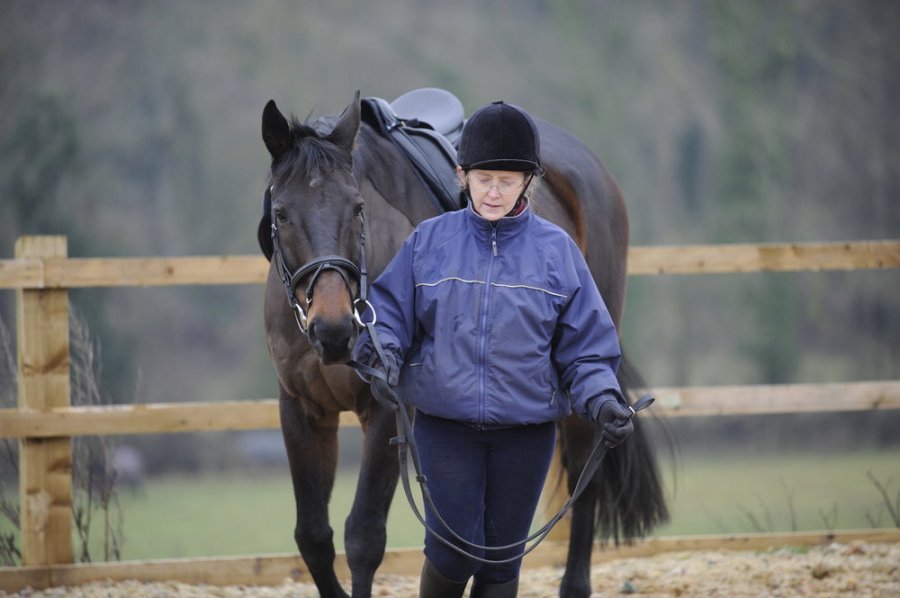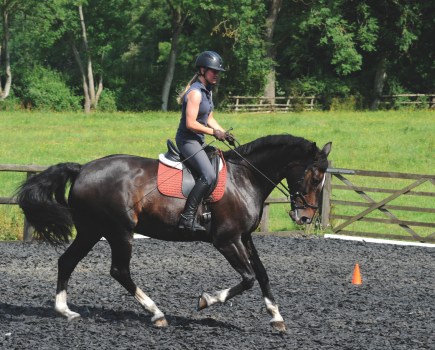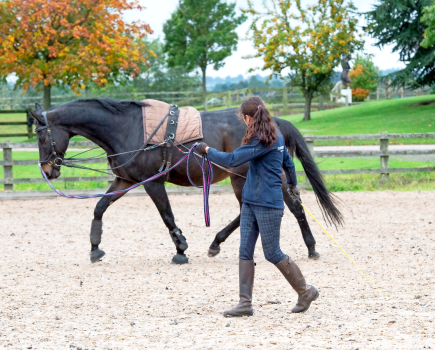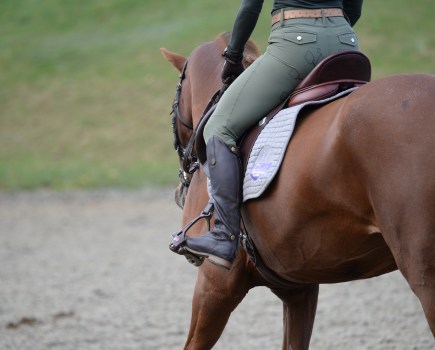Is your horse struggling with stiffness on one rein? Then check out these five tips from BHS instructor and British Dressage judge Vikki Hayton on how to help even them out.
1. Check his saddle and back
Firstly, check that you and your saddle are centred, and if you’re unsure, get a qualified saddle fitter to check for you. A good UKCC coach should be able to check that you’re sitting centrally too.
It’s also worth stressing that your horse’s back should be checked to make sure his stiffness isn’t a result of discomfort.
2. Flexion and counter-flexion
Once you know your horse isn’t in any pain or discomfort, then try to think of the stiffness in terms of the buttons not working quite well on the stiffer side, while your horse has the natural ability to stretch on the other side. You’ll probably have to be very patient and repeat again and again the bending aids, particularly on your horse’s stiffer side.
Don’t think that you need to work more on the stiffer rein to help; you can work on getting your horse to bend when you’re working on the opposite rein too by asking for counter-flexion. In fact, it’s often easier to get bend this way.
3. Lungeing around poles
Lungeing will help if you have a surface, and one of the simplest exercises is to put out six poles in a hexagonal shape and work your horse around the outside of these. This will encourage your horse’s body to bend by engaging his inside hind.
You can also do this exercise when you’re riding. Think about your horse bending around your inside leg and moving his ribcage across; too much neck bend will only hinder the hindleg coming under.
4. Think laterally
Doing lots of turns down the long side — so that you leave and return to the track in a shape a bit like shark’s teeth — will help to loosen your horse and help with suppleness. But, ultimately, lateral work is best for increasing a horse’s suppleness.
This means lots of leg-yield and shoulder-fore, or shoulder-in, depending on the level at which you ride. Work like this will also help to achieve equal bend both ways.
5. Circle around a marker
Another good exercise is to set out some traffic cones or markers (you need only two or three). Circle around them, developing the bend. It’s a simple exercise, but because you and your horse are focusing on the cone it helps with the bend. You can help develop your leg-yield by trying to push your horse away from the cone with your inside leg.
About the expert: Vikki Hayton is a BHS instructor and examiner, and British Dressage judge based at College Farm EC.









